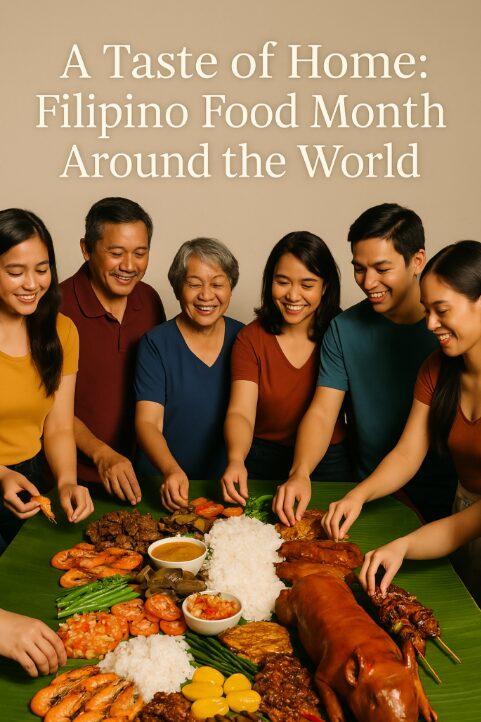One night about two years ago, Romeo Garcia decided it was time to take a “creative sabbatical” from his career in academia.
Over the past six years, Garcia — who was then a dean of special programs and grants at Merritt College in Oakland, California — had been attending chocolate making workshops on weekends as a way to decompress from his daily routine.
“I would just watch how the chocolates would melt and I thought, ‘Wow that is super meditative,’ he told the Asian Journal. “I just enjoyed watching the process and the craft.”
The late-night thoughts soon turned into concrete actions: resigning from his position, withdrawing from a doctorate program, and booking a flight to Belgium.
“I told myself, ‘If I’m going to study fine chocolates, I want to learn from the world’s best,’” he said.
Garcia enrolled in a six-month program at Ecole Chocolat, where he learned designing, recipe crafting, and different techniques in fine chocolate making. From there, he continued on at the Chicago Chocolate Academy, and then trained with chocolatier Melissa Coppel in Las Vegas.
He eventually came back to Southern California — where he had grown up after migrating from the Philippines at a young age — and started making homemade chocolate creations and selling them to wholesale clients and at pop-ups and other retailers.
Romeo Chocolates was eventually born, as an “accessible” line “for everyone.”
“I make artisanal, hand-crafted chocolates that are influenced by Belgian technique and style,” he said. “It is influenced by local flavors within Long Beach, local artisans and inspired by my heritage.”
Some of Romeo Chocolates’ standouts include milk and dark chocolate bon bons, flavored bars (i.e. berries or almonds), and calamansi-honey mojito bon bons, which has honey from Bantangas and hints of Tanduay Rum.
On average, the bon bons take three days to produce because of the process that involves shelling the mold and hand painting designs onto the final product.
Recently, Garcia introduced three sipping chocolates as sweet sources of warmth for the colder temperatures. One concoction is a thicker, sweet drink using tablea (Filipino chocolate).
His brand was originally called Amihan, a reference to the savior bird in Philippine mythology and the northeast wind that would cool the backs of Filipino farmers.
“My intention was that this company wasn’t built for me. It was going to be built for a daughter I was planning to adopt and this company was going to be her namesake. Her name was going to be Amihan — that was my goal,” he said.
But Amihan didn’t roll off the tongue so easily, especially for non-Filipino customers.
“Everyone correlates Romeo with a sense of romance, a sense of love or affection. It’s about something that people will remember,” Garcia said. “I’m definitely not an expert on romance but I’m learning a lot about chocolates. In whatever way that makes people feel good, I’m happy to provide that.”
This past year, Garcia has set his sights on opening a brick and mortar shop in Long Beach, an area he regards as very friendly to small businesses. He’s taken to Kickstarter to help raise $20,000 in funds needed to turn this into a reality.
The campaign, “Let’s Build a Chocolate Shop,” is meant to draw in community participation. It ends on Sunday, December 18, and is just a few hundreds of dollars away from reaching the target, as of this writing.
The 1,200-square foot shop, which is projected to open in the first quarter of 2017, is designed to have retail space, an open kitchen where customers can observe the chocolate being made, and a chocolate tasting room.
“This room is supposed to be an experiential room, where they try chocolate from different origins, whether it be from Honduras or El Salvador. It can be from North Shore Hawaii. Lately, I traveled to Davao in the Philippines. folks can try the different flavors in chocolate, just like coffee,” he said, adding that there will also be chocolate making workshops for kids, and chocolate and wine pairings for adults.
The space will also help keep up with the demand of online orders.
Though chocolate making may seem like an entire life transformation, Garcia said that the patterns of “learning and teaching” are still very much present now. He has traveled to different areas of the world — from Europe to the Philippines — to source ingredients and understand how these cultures make chocolate.
“What I appreciate about chocolate in the Philippines is that sometimes it’s just right in your backyard. Some of the methods I saw there made me have an appreciation for even the rustic methods. It’s so small scale. But it’s cacao made with love — there’s a lot of affection put into that,” he said, hinting at more Filipino-inspired creations to come.
Further, being a first-time business owner has taught him a lot about operations and managing people. “Being a chocolatier is an extremely romantic profession, but there is nothing romantic about being a small business owner,” he joked.
Later down the line with the shop, he hopes to teach apprentices about the detail and care that goes into the craft and introduce more chocolate recipes.
“The core thing is: How do you make this a meaningful and productive working environment for your team? How do you maximize their greatness?” he said.
But beyond the taste of the chocolates, Garcia intends the company to create a “wellness and mindful experience” for customers, referencing the feeling he gets while watching chocolate slowly melt.
“Because of the product itself, chocolate doesn’t allow you to rush. You have to wait for it to do its thing — it’s such a metaphor for life. A lot of times, the best things take patience, grit and persistence. Sometimes the batches don’t turn out the way I plan so I just try again. It’s given me a lot of lessons in terms of patience,” he said.





